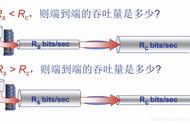在之前的slice中有提到到[]byte和string之间可以使用copy命令转换,那么string和[]byte还有什么其他方式可以转化?他们到底有什么区别?
一、string和[]byte对比1.1、什么是string根据标准库的builtin的解释
type string string
string is the set of all strings of 8-bit bytes, conventionally but not
necessarily representing UTF-8-encoded text. A string may be empty, but
not nil. Values of string type are immutable.
简单来说就是字符串是一系列8位字节的集合,通常但不一定代表UTF-8编码的文本。字符串可以为空,但不能为nil。而且字符串是不能修改的。
1.2、什么是bytebyte就是uint8的别名
1.3、string和[]byte占用内存import "unsafe"
func main() {
str := "hello world"
bytes := []byte("hello world")
println(unsafe.Sizeof(str))
println(unsafe.Sizeof(bytes))
}
// Output:
16
24
string和[]byte占用内存是不一样的。
string的源码结构为
type stringStruct struct{
str unsafe.Pointer
len int
}
[]byte的实现其实就是切片的实现。
根据结构,我们可以得到,string占用16字节,[]byte占用24字节
二、字符串不能修改准确的说是字符串的值不能被修改,但整体能够被替换。
str := "hello world"
str[0] = 'w'
这种运行会报错。
这是因为string的指针指向的内容不能更改,每更改一次内存,都需要重新分配内存。
这同样也是直接操作string比[]byte低效的原因。
三、string和[]byte互相转换1、string to []bytefunc stringtoslicebyte(buf *tmpBuf, s string) []byte {
var b []byte
if buf != nil && len(s) <= len(buf) {
*buf = tmpBuf{}
b = buf[:len(s)]
} else {
b = rawbyteslice(len(s))
}
copy(b, s)
return b
}
func rawbyteslice(size int) (b []byte) {
cap := roundupsize(uintptr(size))
p := mallocgc(cap, nil, false)
if cap != uintptr(size) {
memclrNoHeapPointers(add(p, uintptr(size)), cap-uintptr(size))
}
*(*slice)(unsafe.Pointer(&b)) = slice{p, size, int(cap)}
return
}
这里其实就是先分配[]byte的长度,然后拷贝s到b。
copy调用的还是slicestringcopy函数,将[]byte的0号位置指向string的数组指针
func slicestringcopy(to []byte, fm string) int {
if len(fm) == 0 || len(to) == 0 {
return 0
}
n := len(fm)
if len(to) < n {
n = len(to)
}
memmove(unsafe.Pointer(&to[0]), stringStructOf(&fm).str, uintptr(n))
return n
}2、[]byte to string
func slicebytetostring(buf *tmpBuf, b []byte) (str string) {
l := len(b)
if l == 0 {
return ""
}
if l == 1 {
stringStructOf(&str).str = unsafe.Pointer(&staticbytes[b[0]])
stringStructOf(&str).len = 1
return
}
var p unsafe.Pointer
if buf != nil && len(b) <= len(buf) {
p = unsafe.Pointer(buf)
} else {
p = mallocgc(uintptr(len(b)), nil, false)
}
stringStructOf(&str).str = p
stringStructOf(&str).len = len(b)
memmove(p, (*(*slice)(unsafe.Pointer(&b))).array, uintptr(len(b)))
return
}
可以看到str的地址也是重新分配内存的。
所以string和[]byte相互转换都会有新的内存分配,是消耗性能的。
对应的方式就是string(b)和[]byte(s)。
四、特殊的转换方式我们其实已经知道底层是指向同一块内存空间的,那么我们可以用如下的方式:
func stringtoslicebyte(s string) []byte {
sh := (*reflect.StringHeader)(unsafe.Pointer(&s))
bh := reflect.SliceHeader{
Data: sh.Data,
Len: sh.Len,
Cap: sh.Len,
}
return *(*[]byte)(unsafe.Pointer(&bh))
}
func slicebytetostring(b []byte) string {
bh := (*reflect.SliceHeader)(unsafe.Pointer(&b))
sh := reflect.StringHeader{
Data: bh.Data,
Len: bh.Len,
}
return *(*string)(unsafe.Pointer(&sh))
}
func main() {
var str string = "hello world"
b1 := stringtoslicebyte(str)
println(b1)
str1 := slicebytetostring(b1)
println(str1)
}
但是用的unsafe包,直接基于结构体进行转换,一旦造成panic,是无法recover的。
五、总结- string可以比较,[]byte不能比较,所以map的key不能是[]byte
- 因为无法修改string的某个字符,所以需要转成[]byte,然后才能修改
- string不能为nil
- []byte是切片类型
- 大量的字符串处理,使用[]byte,性能会更优


























